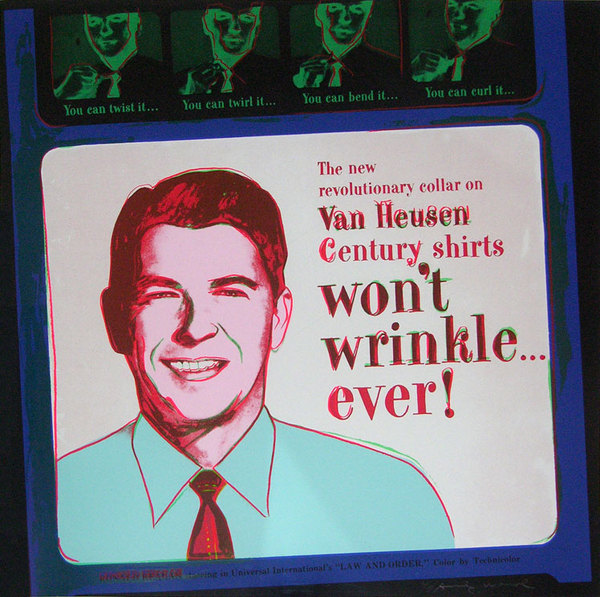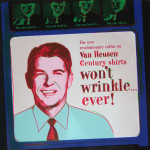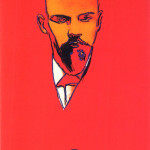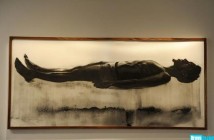ANDY WARHOL: POP POLITICS @ THE CURRIER MUSEUM OF ART
This year has been chock full of Warhol. In 2008 Warhol would have celebrated his 80th birthday. This milestone (if one can call a dead man’s birthday such a thing) sparked the conference “Andy at 80? Considering the Warhol Legacies on His 80th Birthday” at Harvard back in October, as well as several exhibitions across North America. You have “Warhol Live: Music and Dance” at the Montreal Museum of Fine Arts, “Andy Warhol: Other Voices, Other Rooms” at the Wexner Center for the Arts in Columbus, Ohio and a bit closer to home we have “Andy Warhol: Pop Politics” at the Currier Museum of Art in Manchester, New Hampshire. Each of these exhibitions separates Warhol’s extensive body of work into themes that make the work manageable and also opens up windows on specific (and myriad) obsessions that he had. I had the opportunity to check out the Currier’s exhibition this weekend.
“Andy Warhol: Pop Politics” delves into Warhol’s obsession with not only fame but also power. The choice of subjects that he pursued (and who ultimately began pursuing him) ranges from the obvious (Jackie Kennedy) to the sublime (Golda Meir, Prime Minister of Israel). The show begins with the Kennedy’s, who were arguably Warhol’s earliest subjects of fascination. The exhibition includes the magazine images and some of the notes that Warhol used to begin his thought process. It is a fascinating look into just how, and perhaps why, he chose the images he did. The Kennedy pieces are arguably the most powerful. The family remains one of the most fascinating in American culture despite the waning of their presence.
The exhibition includes Warhol’s most famous political images. Of course the "Mao" is here, which is really quite nice to see. The Currier installed the work next to Warhol’s four Reigning Queens (1985). The queens consists of the only four female monarch's who happened to be reigning at the time: Queen Elizabeth IIof the United Kingdom, Queen Beatrix of the Netherlands, Queen Margrethe II of Denmark, Queen Ntombi Twala of Swaziland. The relationship between totalitarianism and monarchy is archly intimated. The inclusion of his portraits of the Shah Pahlavi of Iran and his wife complement this examination. The great strength of this show is Warhol’s fascination with problematic figures. His desire to capture and transform the images of the politically powerful led him to spend time with figures that were less than reputable. The show includes a cover of the Village Voice from the early seventies that links Warhol to the Shah’s repressive regime, adding perspective to the work.
There is a shift in the way Warhol appears to have approached these figures over time. From the Mao to the Queens (a time of 12 years) the works seem to be less harsh and much more palatable. There is softness to the work from the eighties that comes across as less ardently political and much closer to simply being graphically pleasing. This could be due to his greater involvement with the magazine Interview.
There were two works included in the show that I found particularly fascinating. The first is Warhol’s portrait of Ronald Reagan. Ads: Van Heusen (Ronald Reagan)> (1985) uses an advertisement from Reagan’s film days. In the ad (also included in the exhibition) Reagan declares that his shirt “won’t wrinkle!” while giving the camera a lopsided grin. Warhol strips the ad to its graphic elements thus heightening the general creepiness of the original imagery. The work is made all the more frightening in that Reagan was over 70 at the time, yet still looked very much like the younger Regan in the photo used in the ad. It is a highlight of the show.
The other piece I felt was amazing was Red Lenin (1987). The piece depicts Vladimir Lenin and incorporates a photograph by Philipp Schonborn. Once a straightforward portrait, Warhol completely dissipates the figure of Lenin in a field of bright red, while filling in the Soviet premier’s face and hands with a vivid orange. It is powerful and engaging. I would argue that it is the equal of the much better known Mao.
Overall the show is well worth the trip to Manchester. The exhibition offers up a nice examination of a particular aspect of Warhol’s oeuvre. It is smart. The narrative flow keeps the viewer interested and there is work included that is rarely seen outside of the Warhol Museum in Pittsburg. The museum itself is also merits some exploration. While its collection is small, it does an admirable job of covering the many art-historical bases. There is also a small exhibition by sculptor Kirsten Reynolds as part of the Spotlight New England series. Her site-specific installation of bright, graphic panels and faux materials is fun and complements the Warhol show.
- Andy Warhol, Ads: Van Heusen (Ronald Reagan) 1985.
- Andy Warhol Red Lenin 1987.
"Andy Warhol: Pop Politics" is on view September 27, 2008 - January 4, 2009 at The Currier Museum of Art.
All images are courtesy of the Currier Museum of Art.






